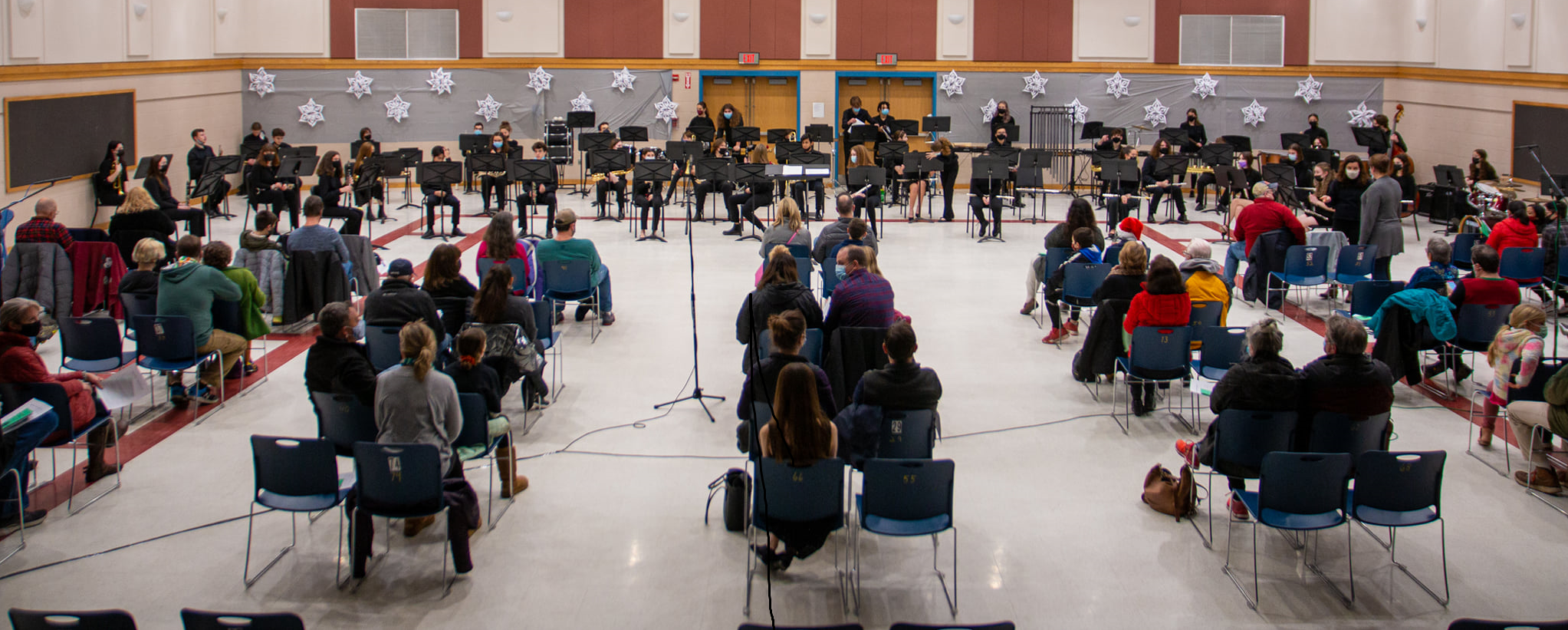
At their annual Winter Concert in December 2021, The Maynard High School Concert Band performed ‘Lorenzo’s Clock’ by Andrew Boysen Jr.
The piece was commissioned by the Maynard Sesquicentennial Committee and the Maynard Music Association in honor of Maynard’s 150th anniversary.
You can listen to the recording here.
Below are the composer’s notes:
When Kevin Kozik, Director of Bands at Maynard High School, asked me to write a piece to celebrate the
sesquicentennial of Maynard, Massachusetts, I had to admit that I knew very little about the town. I began
my research process by reading Maynard, Massachusetts – A Brief History, which was a wonderful
introduction to the town’s background and development, from the initial importance of the Maynard
family and their role in the growth of the Assabet Woolen Mills all the way to the rise and fall of the
Digital Equipment Corporation. After reading, I felt a need to see and experience the place before writing
about it, so with coffee in hand from Boston Bean House, I strolled through town in July 2021, taking
photos of the Assabet River, the enormous mill complex, Powell Flutes, and the Amory Maynard House.
More than anything, though, I was struck by the dominating central impact of the Clock Tower, a
beautiful structure rising above everything else in the middle of town. I knew then that this had to be the
focus of any musical work celebrating Maynard.
The Clock Tower, built by Lorenzo Maynard in 1892 as a memorial to his father Amory, also appears on
Maynard’s town seal showing the time 12:10, a reference to days gone by when the fire department would
test their rooftop horn at 12:10 pm. In addition to the fact that the Clock Tower is a strong visible
reference for Maynard, it also seemed to me that references to clocks and time would be more than
appropriate in a piece celebrating the passage of time and the growth of a town.
Lorenzo’s Clock features the use of many elements related to the idea of clocks and, in particular, the time
of 12:10 pm:
• The percussion section begins and ends the piece by creating “clock” sounds.
• The pitch material for the piece is based on a melodic idea that begins on Re, ascends to Mi, then
descends to Re and Do (in scale degrees, this is 1,2,1,0).
• The melodic “1210” idea discussed above is expanded into the harmony, using chords with an
added 9th, so that the “1210” note collection becomes both melodic and harmonic. For instance, if
you use the notes C, D, E (Do, Re, Mi) and add a G to it, this creates a major chord with an added
9th.
• The added 9th harmony can also be played melodically in such a manner that it becomes the
traditional grandfather clock chime melody, which appears at various points throughout the piece.
• The numbers 1210 also are used to create the phrase structure of the piece by alternating phrase
lengths of 12 and 10 beats each.
• The overall form of the work is created through 24 repetitions of this 12/10 phrase structure,
representing the 24 hours in a day.
• The piece incorporates quotes from one of the most famous clock-related Classical works in the
repertoire, the second movement of Haydn’s Symphony No. 101 “Clock.”
• At the climax of the piece, the chimes strike 12 times.
As I worked on Lorenzo’s Clock, two basic themes emerged, both of which use the above elements and
are therefore related. The first was a chorale, which to me represented the beauty and history of the town.
The second was a more pop-inspired melody, which to me represented the energy of the present and hope
for the future. The overall work, then, is structured as an alternation of these two equally important
concepts.